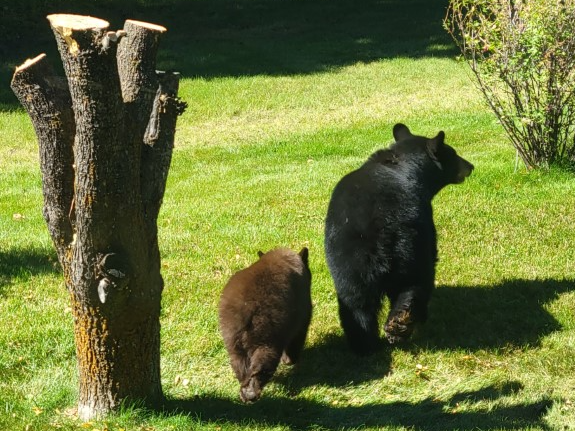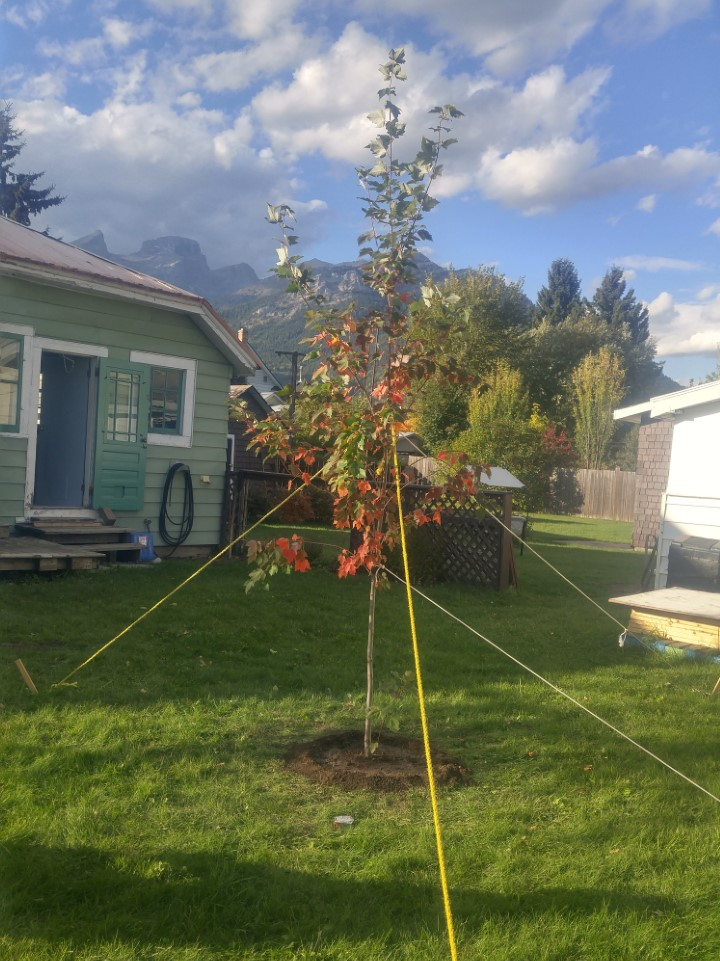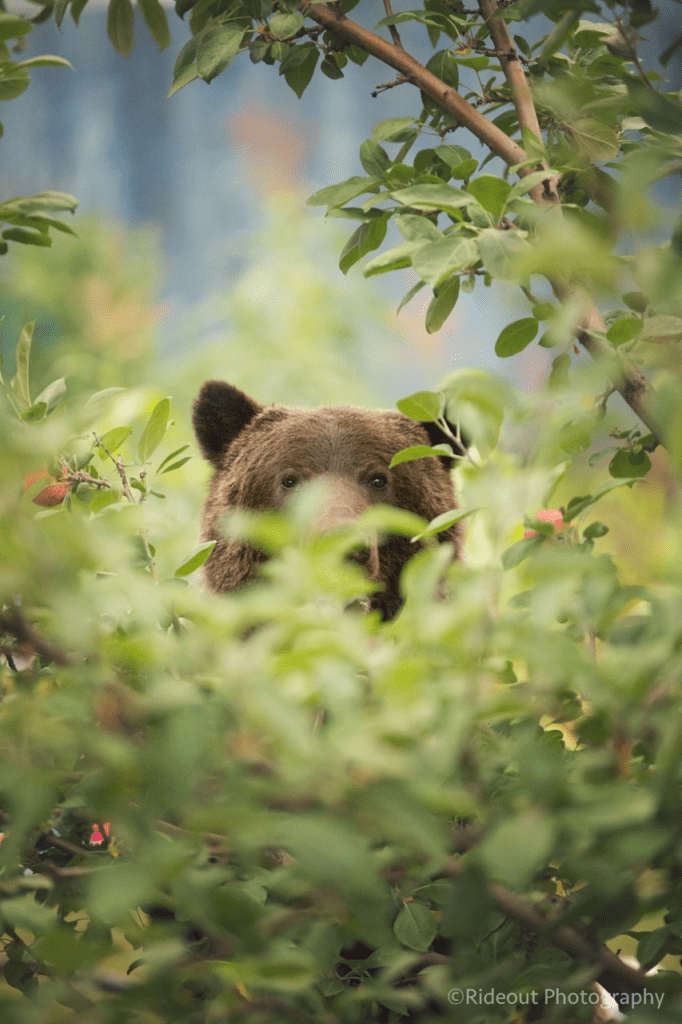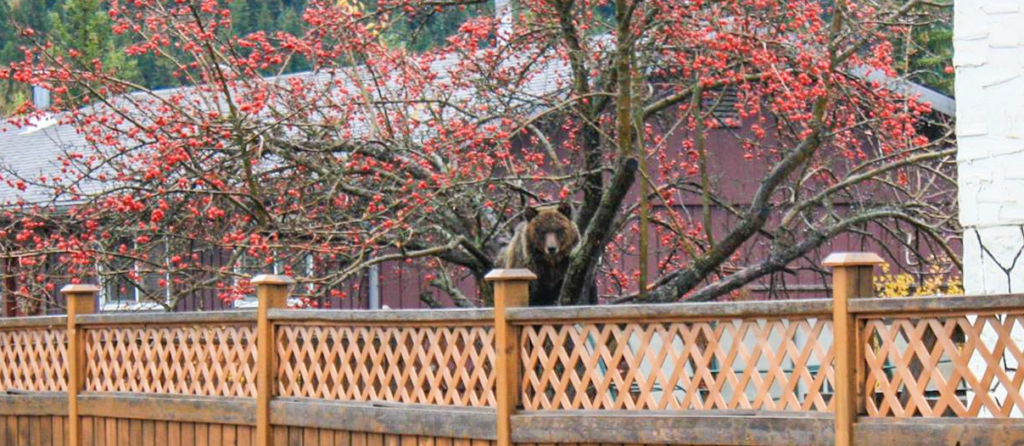Replacing fruit trees to reduce human and bear conflict
British Columbia is known for many things, including the bountiful fruit grown on trees in orchards and backyards.
However, these fruit trees are also highly desired by wildlife. Bears, deer, coyotes, and other species are drawn to trees that grow apples, pears, plums, and other fragrant fruits — which can lead to human-wildlife conflicts.
Dr. Clayton Lamb, a wildlife scientist, ran an Elk Valley Carnivore Coexistence pilot project in collaboration with WildSafeBC, to see if removal of some of the more tempting trees would lower the risks for humans and wildlife alike. Y2Y is proud to have supported this project that helps bears and people safely share space through our 2021 partner grants program.
This project is in the Elk Valley of British Columbia, located in the far southeast near the Alberta and Montana borders. As of 2016, there were more than 11,000 people living in the region, as well as many visitors because tourism and recreation are important parts of the economy. The Elk Valley provides opportunities for snowmobiling, skiing, hiking, golfing, fishing, biking, and other outdoor recreation. It’s also rich in wildlife.

Fruit trees are loved by wildlife and people alike
One of the Elk Valley towns, Fernie, has more than 600 properties with a variety of fruit trees growing on them. Fruit trees provide fresh produce and pie ingredients for anyone who has them in their yards, but as Dr. Lamb explains, the trees can cause issues when they are not properly managed and attract wildlife.
Working together to find a solution
To try and curb the conflict, conservationists, scientists, and enforcement agencies formed a collaborative project to deal with the concerns.
Tree removal wasn’t the first option. Residents also pick the fruit or install electric fencing around the trees — however, removal or replacement is often the best option for reducing human-bear conflict.
Removing or replacing the fruit trees can be costly; so in 2021, WildSafeBC and Lamb worked together to provide subsidies for people to remove fruit trees known to attract bears into town and swap them with non-fruit or nut-bearing trees.

Four landowners in Fernie, one in Hosmer, and two in Sparwood chose to remove four apple trees and three crabapple trees through the program. A popular replacement choice was the crimson red maple tree.
Liz P., one of the landowners in Fernie who participated in the 2021 pilot project was happy with the results. “We are really happy with the red maple and thinking we’ll get a few more to outline the property. We love the king crimson maple and the Manitoba maple as well … lots of leaves I know but I’d rather rake leaves than have to pick up rotten apples and have bears wandering through our yard!”
Many reasons fruit ripe for wildlife picking
“There were many factors that lead to unpicked fruit trees,” explains Lamb. “Ornamental fruit trees, such as crabapple and mountain ash, are problematic as they are very attractive to bears and provide little benefit to humans except for their appearance. Other times, trees go unpicked — due to safety concerns from elderly owners who would need to use a ladder pick the fruit. The project’s aim was to support the people in the valley who would find it helpful to no longer have to pick their tree during the busy fall season.”
Several residents also voluntarily removed their fruit trees, inspired by talk about the program. Other residents wanted to keep their trees, and instead felt a renewed importance to pruning and managing the trees responsibly.
The Conservation Officer Service referred landowners with problem trees to the local WildSafeBC community coordinator to provide support and solutions, rather than issue warnings and fines.
“Unfortunately, unpicked fruit trees result in the lethal removal of many bears across the province annually.”
Dr. Clayton Lamb, wildlife scientist behind the project
After a successful first year, there is now a waitlist for 2022. Yellowstone to Yukon Conservation Initiative is pleased to have provided financial support for this pilot project.
“Working together is critical to creating a cleaner and safer community for people and wildlife and will help prevent the needless destruction of wildlife that come into conflict with people,” says Lamb.
He thanks everyone who has made efforts to keep garbage inaccessible to wildlife between collection days, manage fruit trees, and secure all other wildlife attractants as well as help their neighbors, family and friends do the same.



